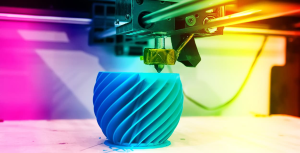Painters Fresno create visual representations of objects, figures or abstract forms on a canvas or other surface. They explore various artistic styles and techniques to achieve specific visual results and express ideas, emotions or meaning through their artwork.
Learn how to use Painter’s revamped property bars, flyouts and brush palettes to streamline your workflow. Also, watch forensic artist Natalie Murry draw a composite sketch using the new physics-inspired Particle brushes.

Painting is a skilled trade that requires precision, attention to detail and practical expertise in paint application techniques. Painters apply paints, varnishes and coatings to surfaces like walls, buildings, bridges, machinery, and vehicles. They also help to preserve those surfaces against weather and corrosion. They may work as part of a construction team or independently, either as a freelancer or for small businesses or large firms.
Painting professionals typically begin their work with conceptualizing and planning their artwork. They consider the desired composition, subject matter, brushwork and textures that will create a visual engaging and meaningful piece of art.
They may use a variety of mediums, including paints, pencils, charcoal, clay and paper. The resulting works can be found in art galleries, museums and private collections worldwide, enriching our lives with beauty and inspiration.
For industrial painting, a candidate should be able to read blueprints and understand specifications in order to determine quantities and types of materials needed. They must also be able to clean and prepare surfaces prior to layering, which may include scraping, sanding and priming. They must be able to estimate painting time and cost, and should possess a variety of tools and equipment such as brushes, rollers, sprayers, airbrushes and stencils.
Painters should have a high level of physical strength and stamina in order to be able to work on large scale projects that involve climbing ladders or scaffolding, and to move heavy materials. They should also be able to operate industrial machinery and follow strict safety standards.
If working on a residential project, the painter will need to remove furniture and other items from the rooms they are painting. They will then cover them with plastic or other protective coverings to ensure that the paint does not damage them. They will need to prepare the surfaces they are painting by washing them or filling in holes and cracks. They will then mix and match the paints and varnishes, and use brushes or sprayers to apply them to the surfaces they are working on.
Painters should be able to work under a variety of conditions, including bright sunlight and in rainy or snowy weather. They must also be able to work in cramped spaces, and be comfortable standing for long periods of time.
Education and Training Requirements
A high school diploma is typically the minimum requirement to work as a painter, though some aspiring artists pursue an associate’s or bachelor’s degree in art or fine arts. Other than that, the profession requires a significant amount of on-the-job training to gain the skills necessary for the job. Oftentimes, the apprenticeship is conducted under the supervision of a more experienced artisan or professional painter. The duration of an apprenticeship can vary from three to five years and is paid at the rate of $15 to $19 per hour.
In addition to completing on-the-job training, painters must have access to tools, materials, and safety equipment. The Sherwin-Williams Learning Center offers several courses that can help new painters learn the ropes. Courses include Understanding Paints, Coats, and Sealants, Fundamentals of Architectural Paint and Coating Technology, and Specifying Wood Stains and Finishes.
Painting is a physically demanding career that requires the ability to climb ladders, scaffolding, and other elevated platforms. It also involves the need to remain standing for lengthy periods of time and lifting heavy objects. For this reason, painters must have physical agility and strength along with excellent visual and color vision to perform their duties properly.
Communication skills are vital for this profession, as painters must be able to clearly relay information about the project’s specifications and requirements to clients. Additionally, painters need to have excellent attention to detail to ensure the final product is free from flaws.
Painters can find jobs in a variety of environments, from construction sites and homes to offices and industrial complexes. They can even be hired by manufacturing companies to apply paint to products like bicycles, motorcycles and automobiles. In the fine arts industry, talented painters can even be hired by museums and art galleries to restore and preserve paintings. This is a highly specialized field and only the most talented painters are chosen for these positions. The painter’s license process varies by state, but usually involves a combination of educational and apprenticeship qualifications, on-the-job training, and passing a certification exam. In some cases, a painter must also be insured in order to obtain a painting license.
Working Conditions
Painting, coating and decorating workers are exposed to a range of occupational hazards. For example, they may work in poorly ventilated areas or locations that expose them to harmful fumes and dust. They also spend a lot of time standing and making repetitive movements. This can lead to back problems, so it is important for these workers to take regular breaks. In addition, they often work with heavy equipment that can be dangerous if not handled correctly. For this reason, it is important for these workers to wear common protective or safety gear when working in these conditions.
Painters are often required to travel between jobs. They frequently work on projects at a variety of sites, including residential and commercial properties. This can be tiring, especially if they work on several projects at once. They should also be prepared for long periods of time spent on their feet, climbing ladders and working in cramped spaces. Painters must also be comfortable using a variety of tools and equipment to perform their job duties, including brushes, rollers and sprayers.
Depending on the type of painter they are, they may be required to work with a wide range of colors and materials. Some painters create abstract paintings that do not depict recognizable objects, while others may focus on conveying specific emotions or ideas. Some painters work in their studio, while others work outdoors, en plein air.
While the working conditions for a painter can be challenging, they are generally not stressful. This is primarily due to the fact that painters do not have a high degree of competition at work. Painters also do not usually face frequent time pressures at work, which can be a significant stressor for some individuals.
In addition to being physically demanding, painting is an artistic endeavor that requires creativity and attention to detail. Therefore, if you are not creative or do not have a strong eye for detail, this is not the ideal profession for you. Additionally, if you are sensitive to chemicals or irritants, this is not the ideal career for you either.
Salary
Painters typically work on a freelance basis, but may also find employment with art galleries and museums. They may also find jobs with private businesses or individuals who hire them to create specific artworks for a specific purpose or occasion.
Painters may choose to work in their own dedicated studio space, which often features a workspace, storage area for materials, and adequate lighting. Some painters may also choose to work in an art institution or school as instructors or artists-in-residence, and will have access to specialized facilities and resources.
Painters that work on commissioned projects can also expect to work on-site at the location where the painting will take place. This can include public spaces, businesses, private homes, and even historic or cultural sites. This type of work can be physically demanding, requiring a lot of bending, kneeling, and climbing. It can also require a significant amount of travel between different sites to complete the work.
